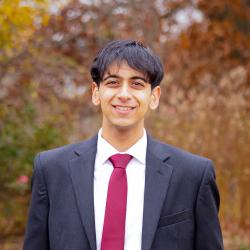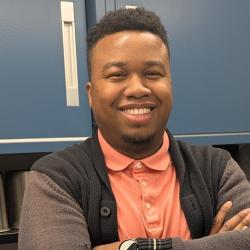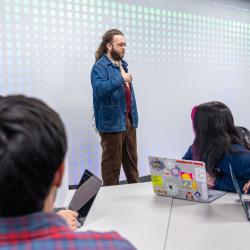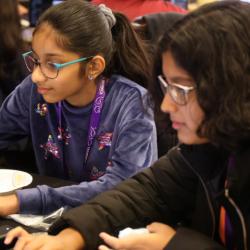Advancing Big Ideas and Tackling the Challenges of Wireless Communications
For 30 years, Nada Golmie (Ph.D. ’02, computer science) has made her mark as an innovator and problem-solver at NIST
As a young girl growing up, and looking ahead to her future, Nada Golmie (Ph.D. ’02, computer science) was certain of one thing—she was curious and had many interests and there was a lot to learn.
“Growing up I had good role models, I was told that I could do whatever I wanted in my career,” Golmie explained. “Women in my family were teachers, lawyers, doctors, so to me that was what you were supposed to do, regardless of gender—the sky’s the limit, just find what you want to do and do it.”
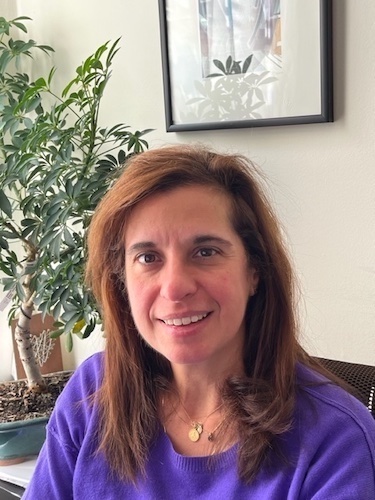
Golmie did just that. A computer scientist and engineer who has spent nearly three decades at the National Institute of Standards and Technology (NIST), Golmie built an impressive track record as a leader, innovator and problem-solver in the rapidly changing world of wireless communications, advising NIST and other federal agencies on the long-range goals and directions for U.S. communications technology. Golmie’s research milestones include a 2006 book, “Coexistence in Wireless Networks: Challenges and System-Level Solutions in the Unlicensed Bands,” and more than 200 technical papers, and her work continues to set the stage for the wireless systems of the future.
“I think we’ve come a long way and it’s so exciting the kind of things that this work enables us to do,” Golmie said “It’s an infrastructure, and today networks are so essential to development, to advancement, to everything we’re doing that it’s hard to imagine a world without internet, without networks, so I think it’s very powerful.”
Promoted in 2021 from her position as chief of the Wireless Networks Division in NIST’s Communications Technology Laboratory, Golmie is now a NIST Fellow, sharing her expertise with organizations and industry around the world as she continues to take modeling and evaluation of wireless systems to the next level.
“How did I get here? I don’t know, I just tried to do what I thought was a good thing,” Golmie reflected. “I was curious and I was not afraid of trying new things.”
From a Commodore 64 to high-speed networks
Golmie still remembers her first computer.“I was maybe nine or 10, it was a Commodore 64 and you had to program it in BASIC in order to get it to do very simple things,” she explained.
With her interest in technology and inspiration from her father, a civil engineer, Golmie entered college with her sights set on electrical engineering and robotics, then shifted to computer engineering and earned her master’s degree at Syracuse University in 1993.
Later that year, she landed a job studying high-speed networks as part of a guest researcher program at NIST. The research sparked her interest and set the stage for her studies as a Ph.D. student in the Department of Computer Science at the University of Maryland.
“My work at NIST kind of gave me the topic—the coexistence of Bluetooth and Wi-Fi,” Golmie reflected. “At the time, we had Wi-Fi systems and Bluetooth was coming out and then we had to find solutions to make them work better.” Interference of wireless systems is still a topic of research today with the proliferation of more wireless devices and systems.
Golmie vividly remembers her dissertation research in wireless communications with Computer Science Professor A. Udaya Shankar and inspiring classes on user interfaces with Distinguished University Professor Emeritus Ben Shneiderman and circuits with Electrical and Computer Engineering Professor Emeritus Robert Bob Newcomb that challenged her and broadened her understanding. And she hasn’t forgotten the craziness of balancing a full-time job with the challenges of her Ph.D.
“I didn’t experience Maryland like a student on campus” she recalled. “I lived in D.C., I worked in Gaithersburg, Maryland, and then I went to College Park to take classes and was spending so much time getting from here to there I don’t even know how I did it. Of course, we did not have remote work then, therefore a lot of the experiments, simulations and work would happen at NIST, and sometimes I would even have to spend the nights there working. It was a crazy time.”
Golmie worked as a computer engineer in the High Speed Network Technologies Group in NIST’s Information Technology Laboratory until 2002 when she earned her Ph.D. and stepped up to a position as group leader of the Emerging and Mobile Network Technologies Group.
During those years, as wireless networks became increasingly popular, Golmie studied problems with network performance and interference, looking for ways to quantify and solve those problems. By 2014, she was tapped to lead a new division at NIST, focused exclusively on the challenges of wireless networks.
“I think that’s the biggest achievement of my career so far—starting a new division in a new laboratory focused on wireless communications,” she said.
For Golmie and her team, NIST’s new Wireless Networks Division offered unprecedented opportunities for collaboration and research. In 2015, she launched—and still co-chairs—a groundbreaking consortium called the NextG Channel Model Alliance to develop novel measurement and modeling techniques of RF propagation, the behavior of radio waves when they travel from one point to another.
Focusing on the Future
Today, the NextG Alliance has grown to over 300 participants, representing more than 180 organizations that share data and work to solve the problems that develop with wireless networks as they expand. Meanwhile, Golmie’s new role as NIST Fellow is an opportunity to take her research in new directions and focus her vision for the future.
“With this latest promotion, I’m happy because I can focus on research, reading and writing,” Golmie said. “If you’d told me 30 years ago that I would accomplish all these things at NIST, I would have said no way. But as the years have passed, I found myself going from one exciting project to another and now suddenly it will be 30 years.”
For three decades, Golmie has embraced the challenges of wireless communications and contributed to advances that continue to change our lives. It’s a mission she hopes to keep pursuing for many years to come.
“What’s fascinating is it’s connecting people, it changes profoundly how we do things and we’ve come a long way,” Golmie reflected. “As a National Measurement Institute, our mission is to really push the limits and support the development of big ideas, so we’re really moving the needle here. And I want to keep doing that.”
While not studying the next big problems in wireless communications, Golmie enjoys spending time with her family, her husband Geoffrey Barrows (Ph.D’00, EE) and their son. She likes reading, hiking and traveling.



